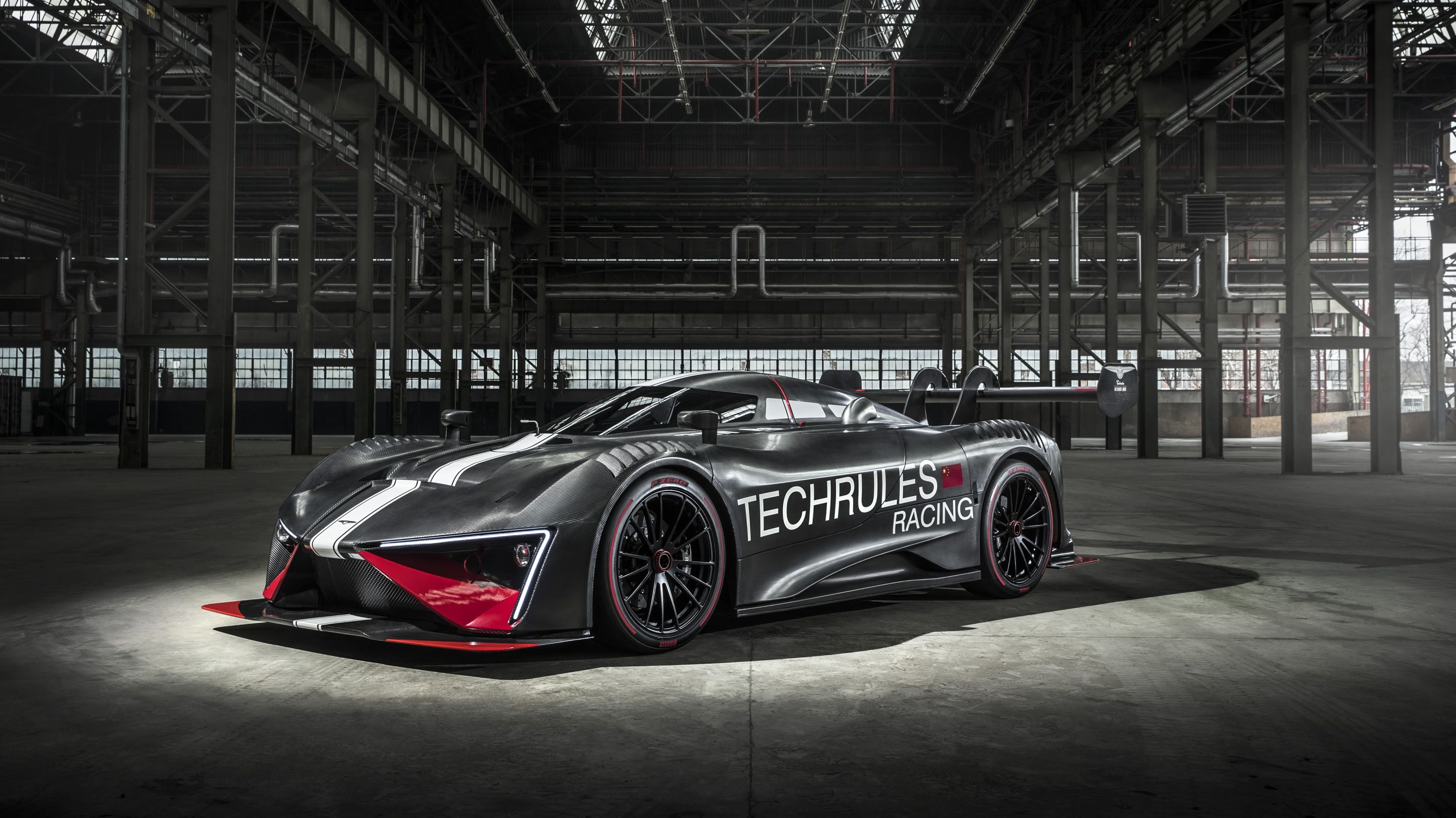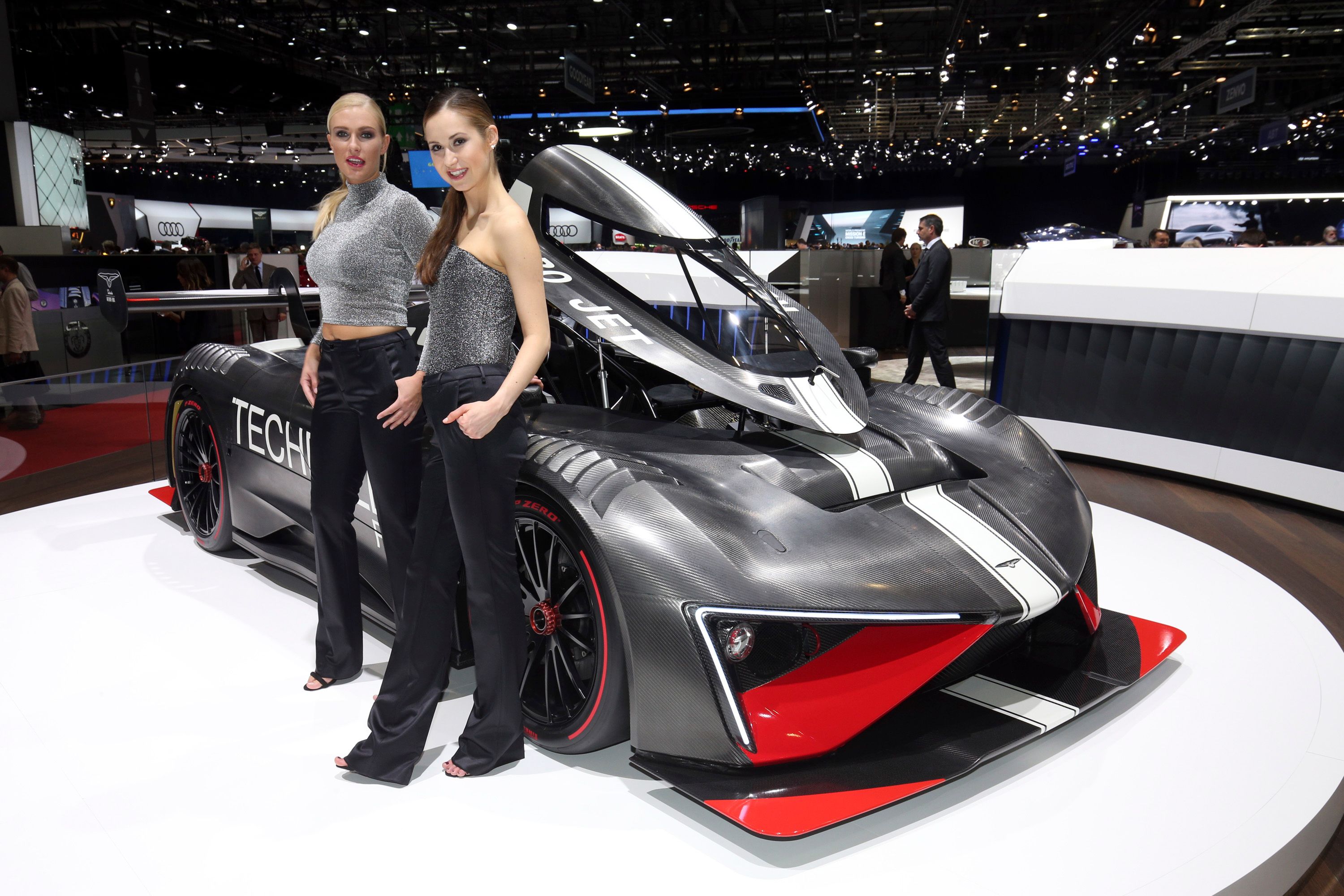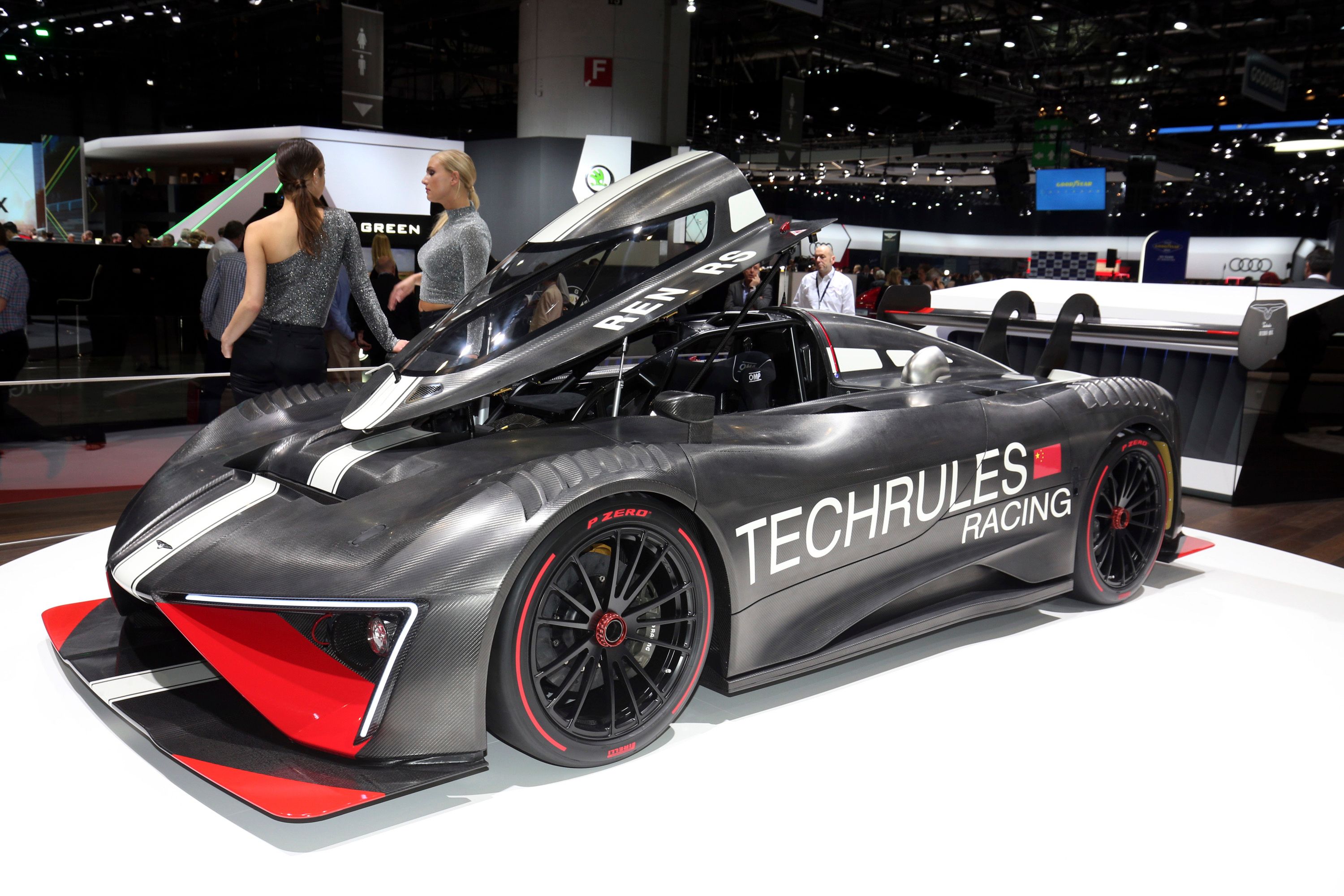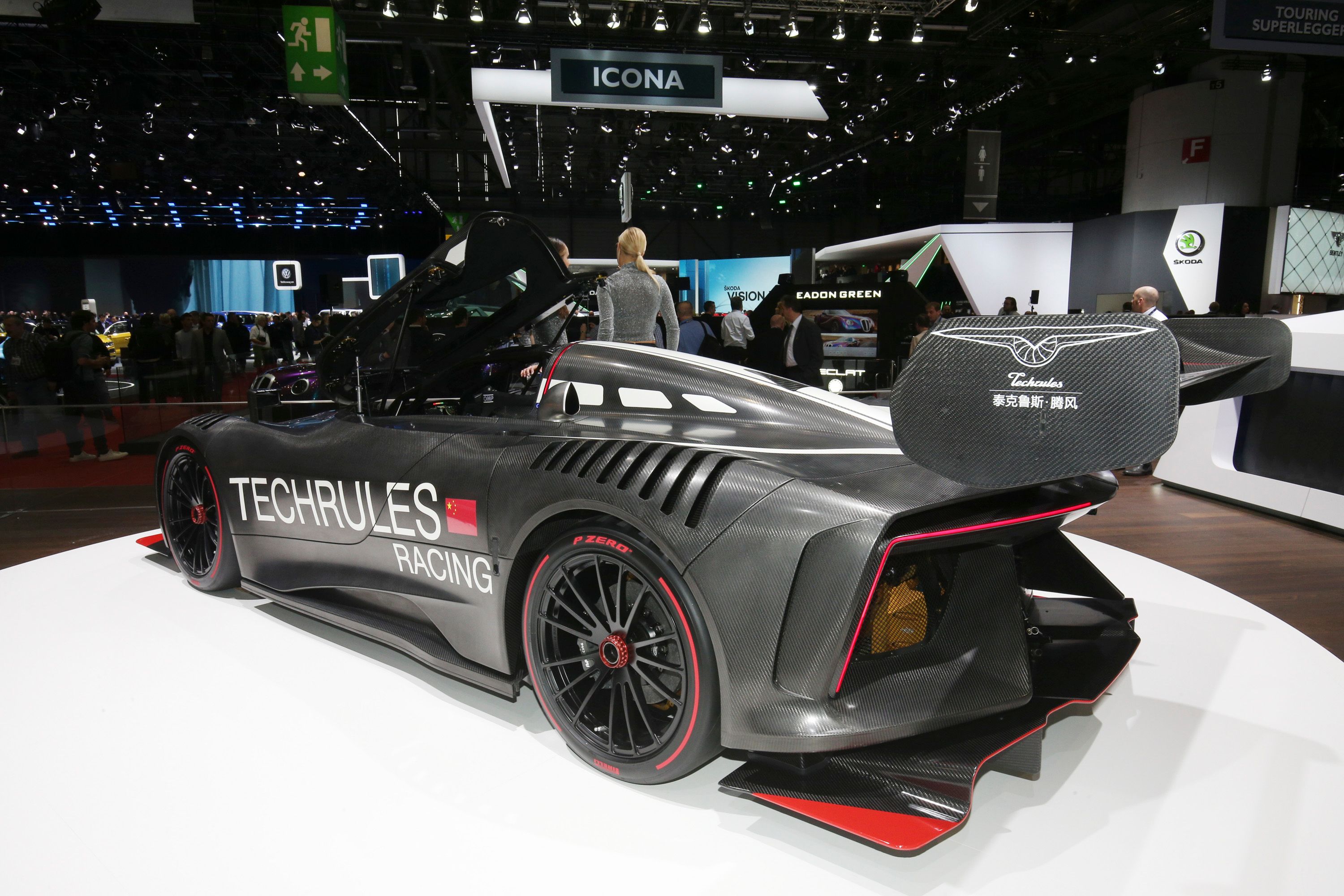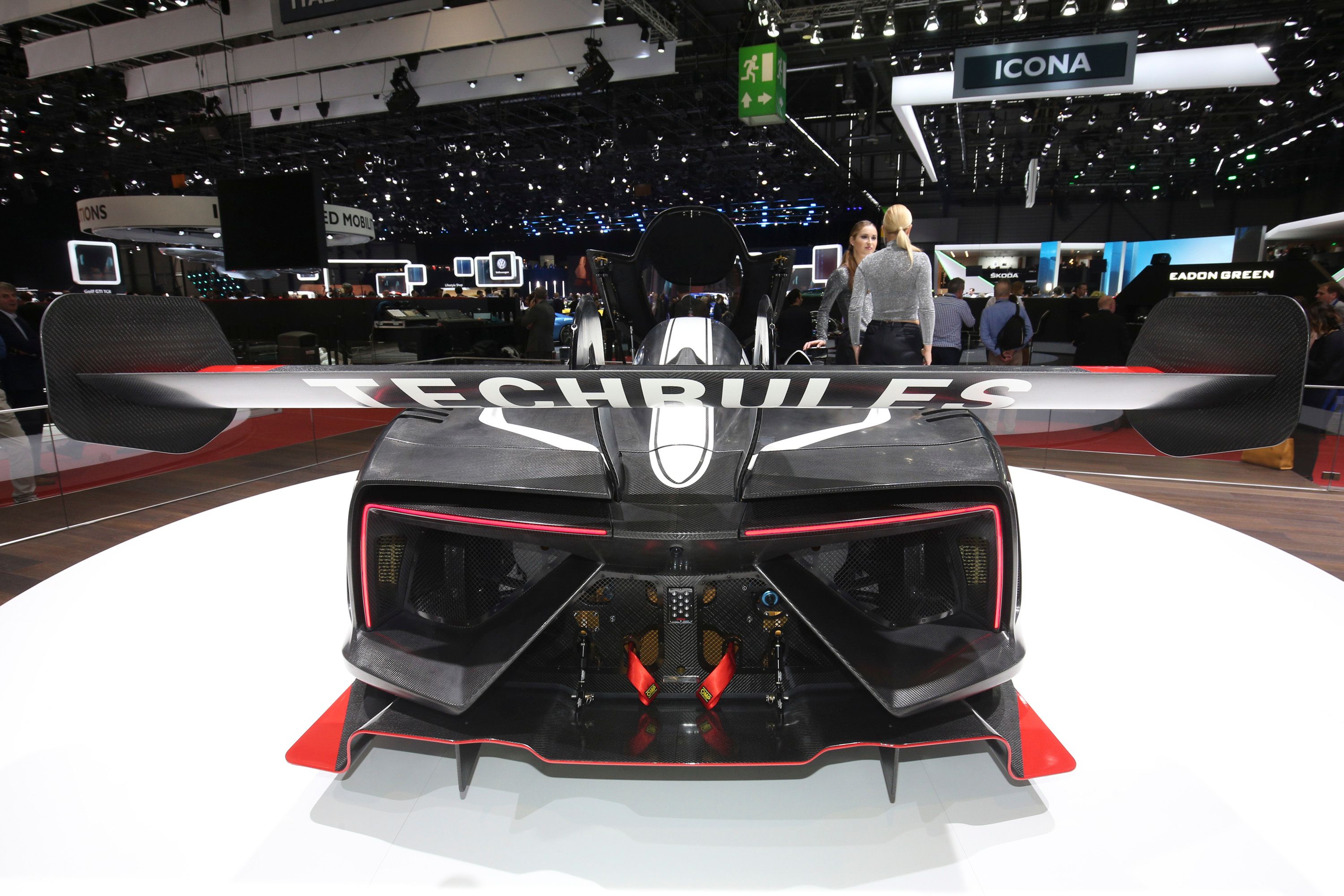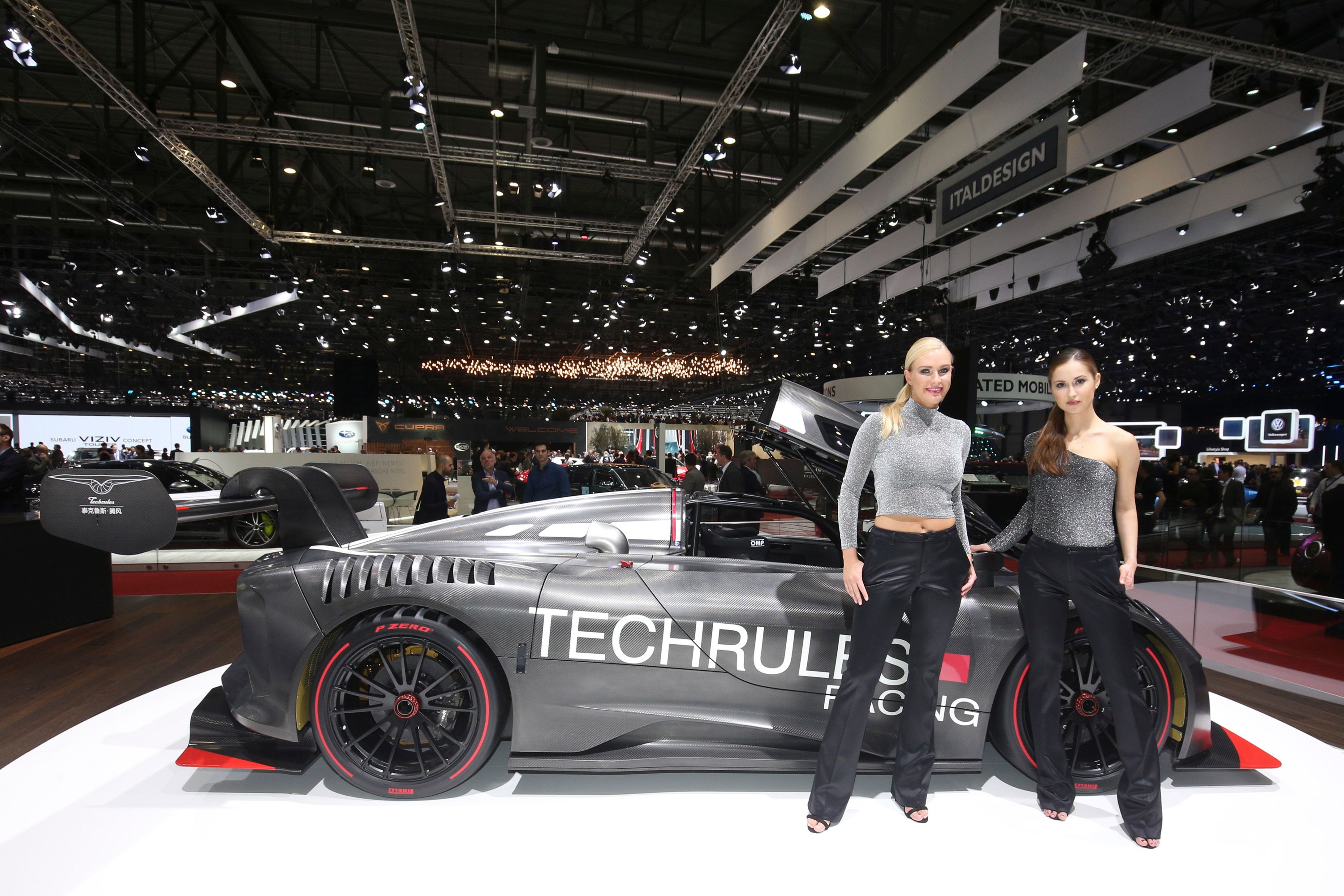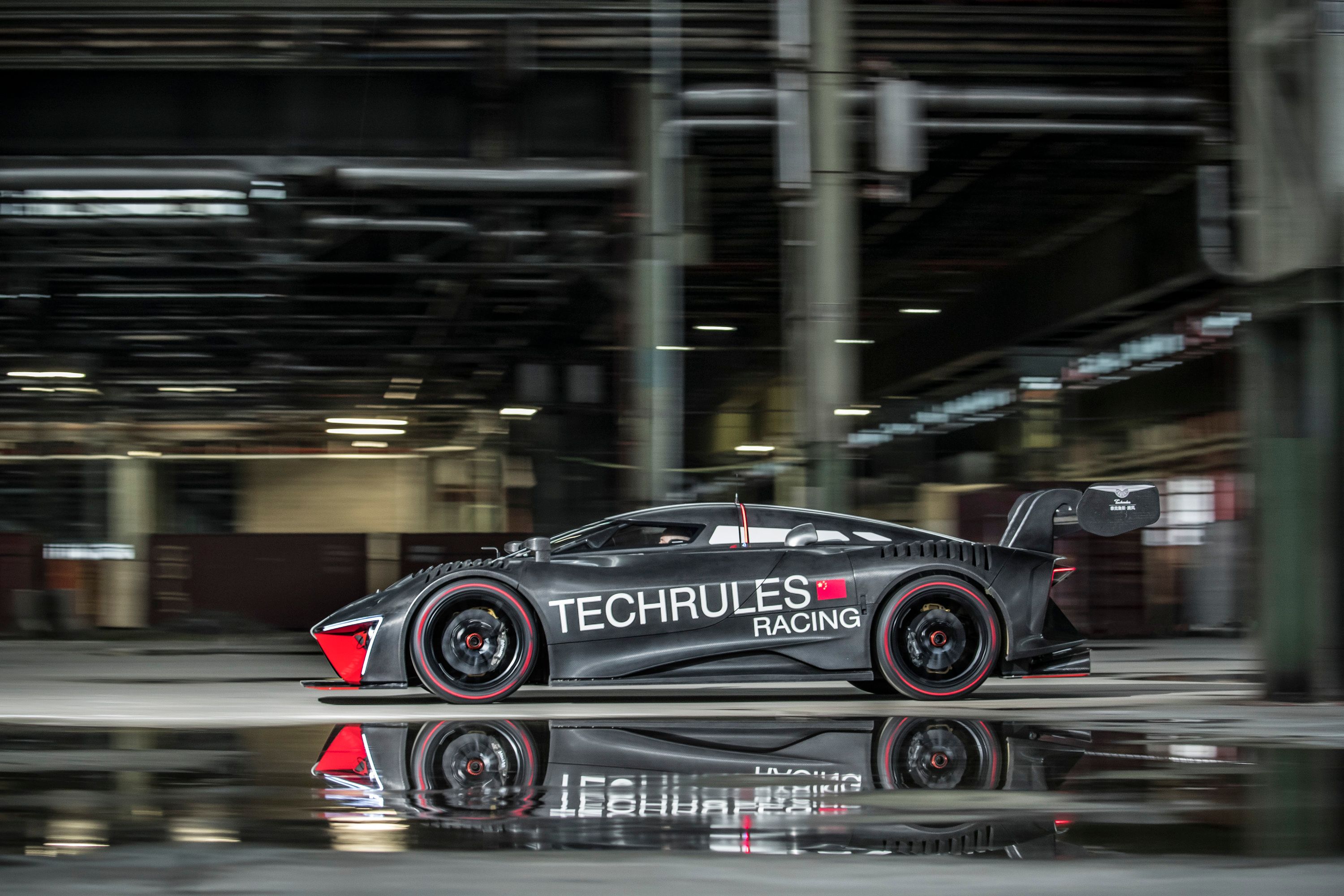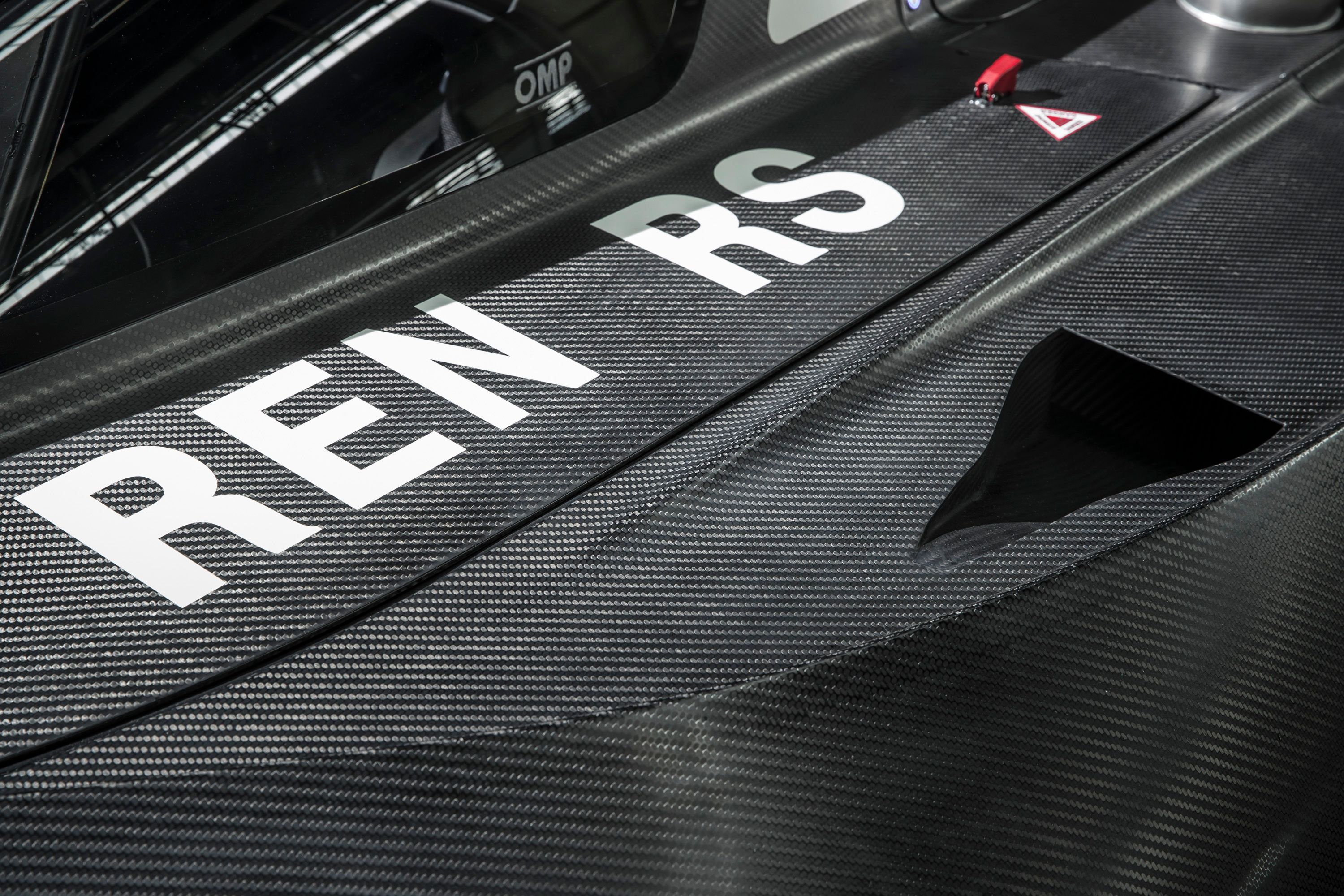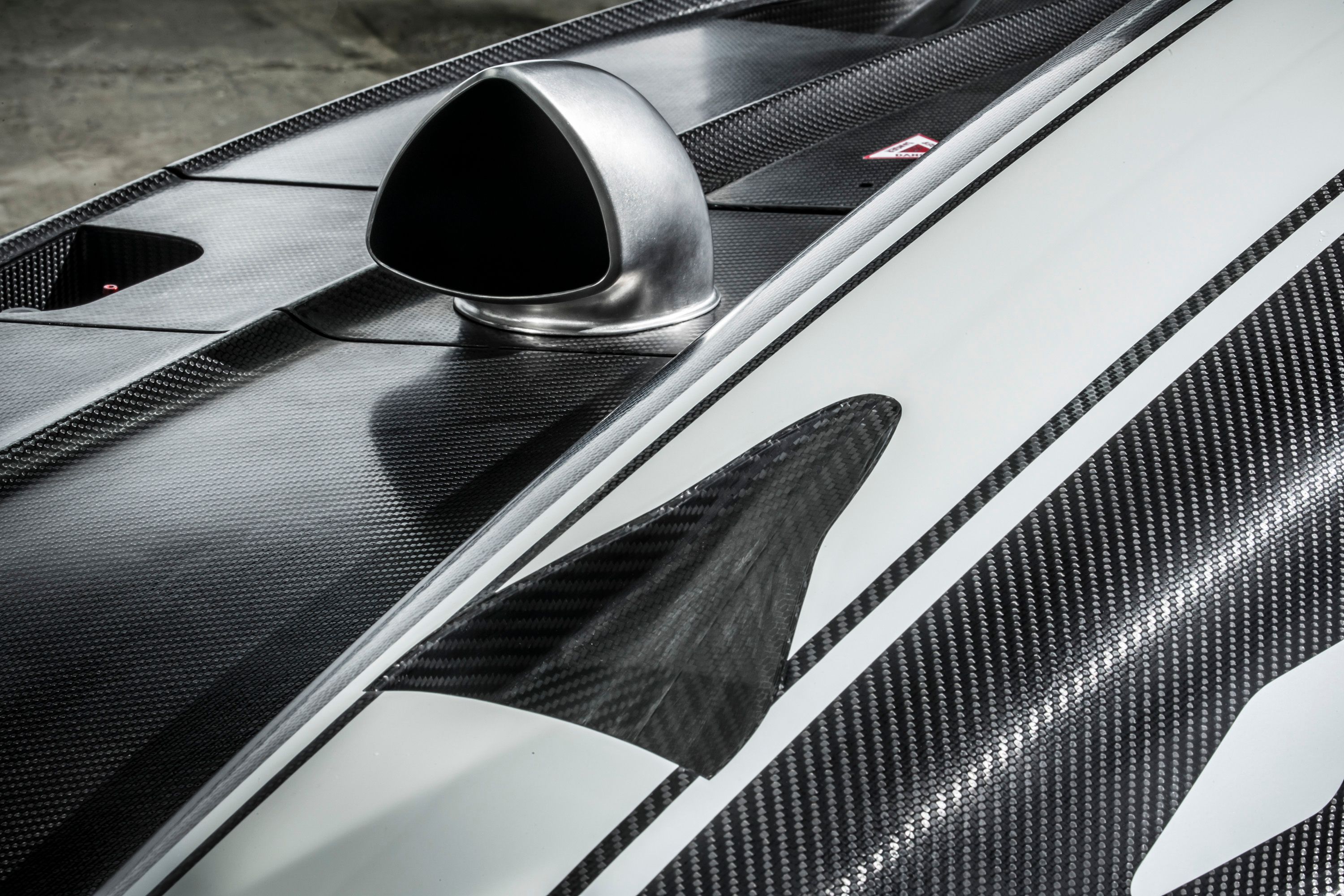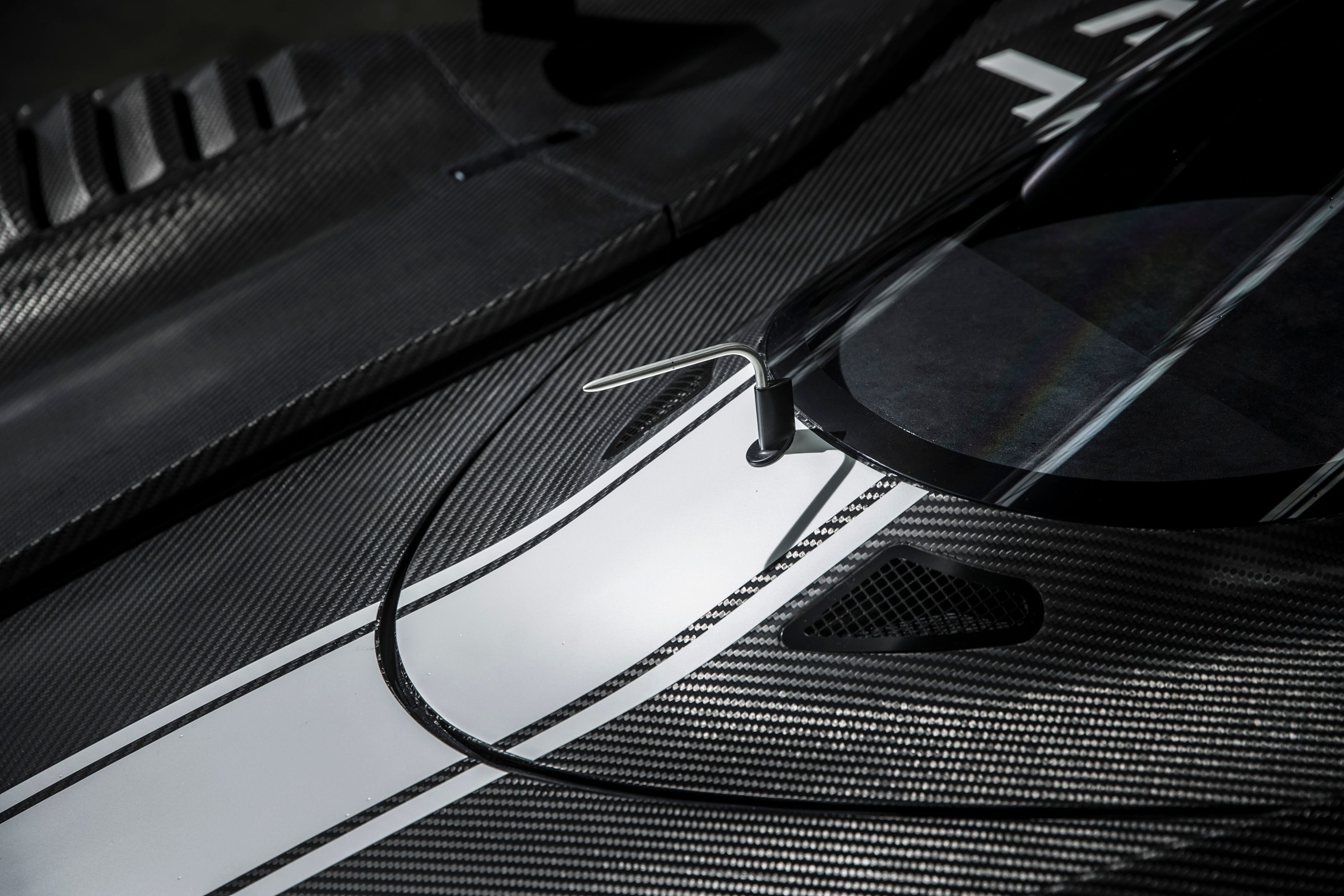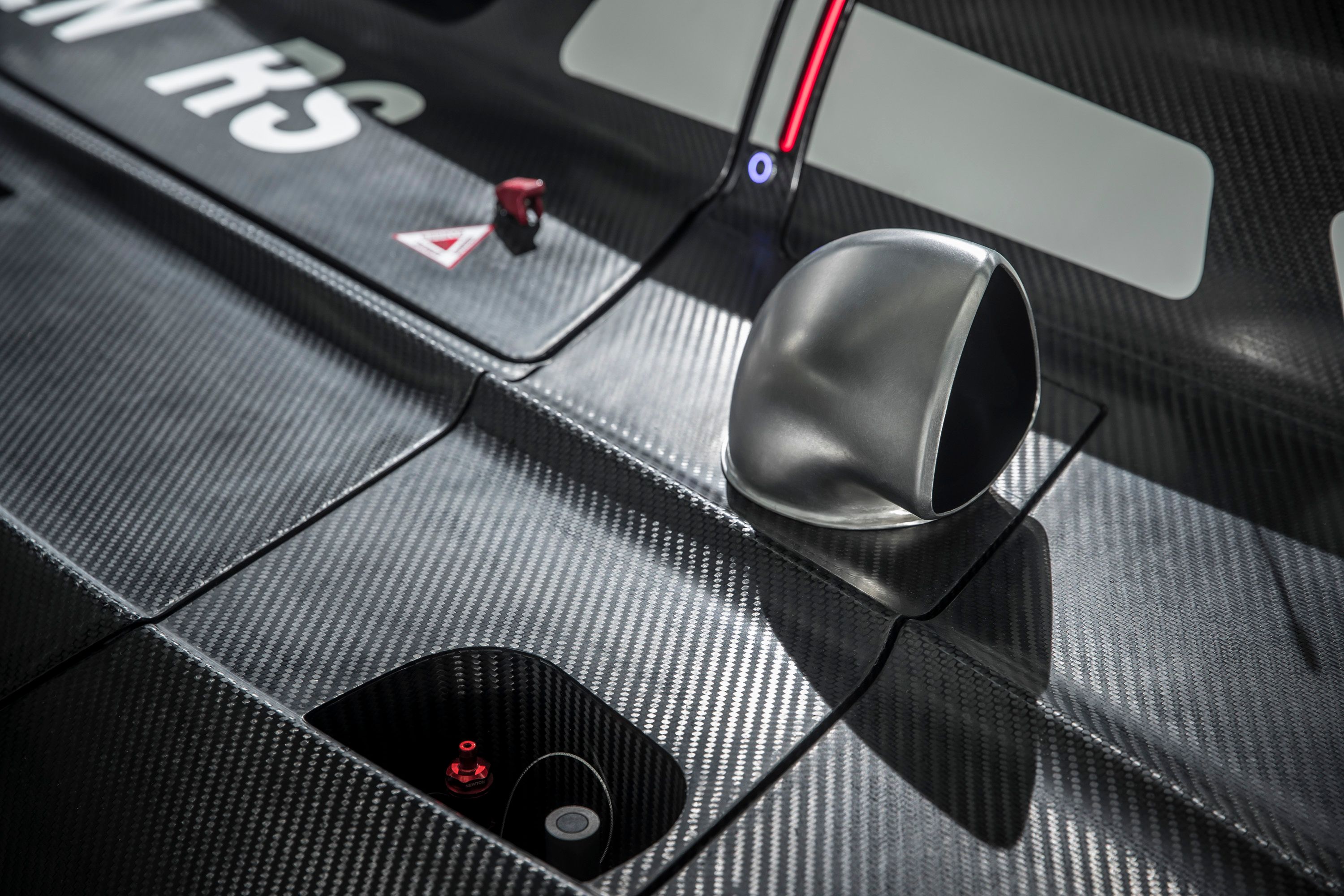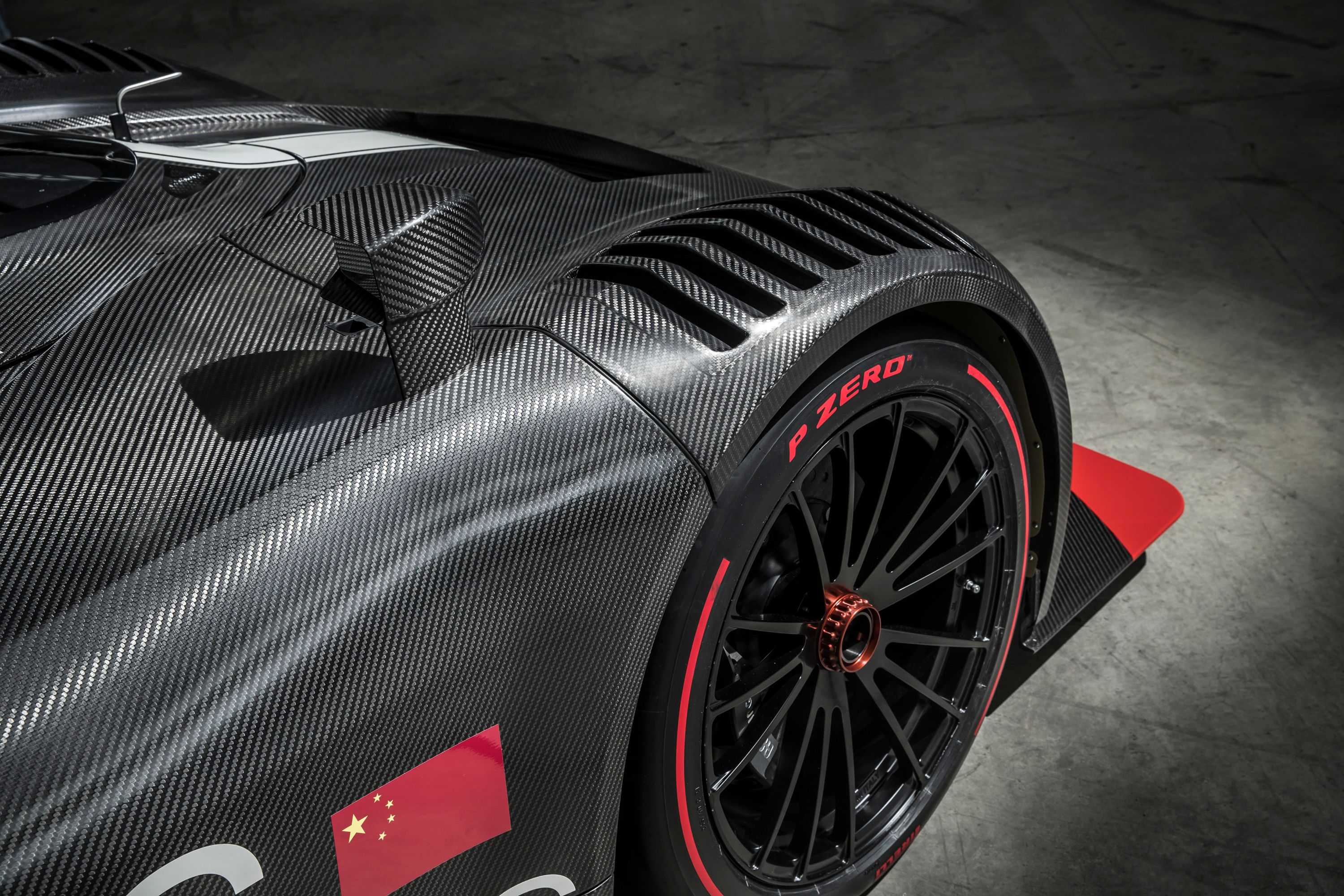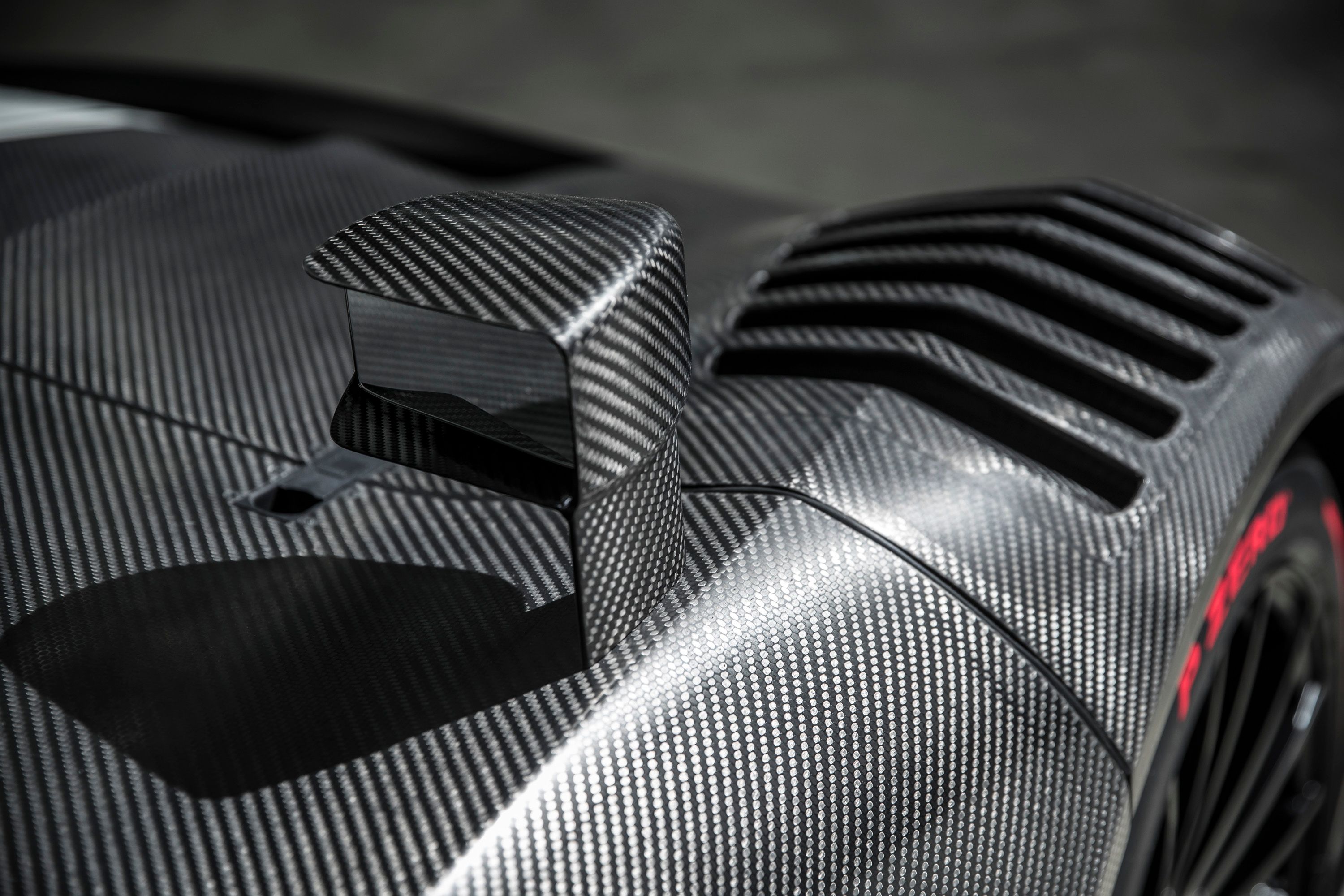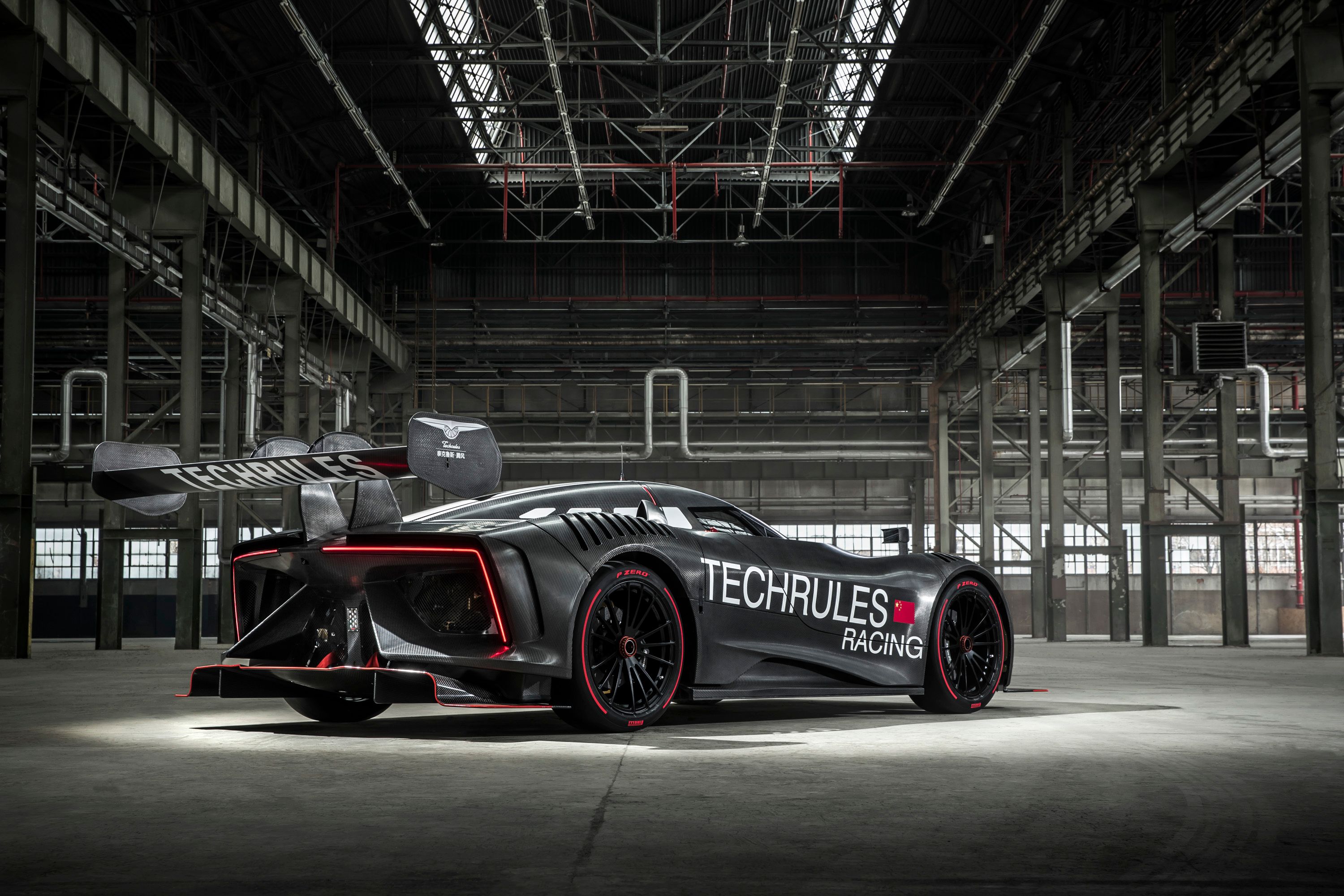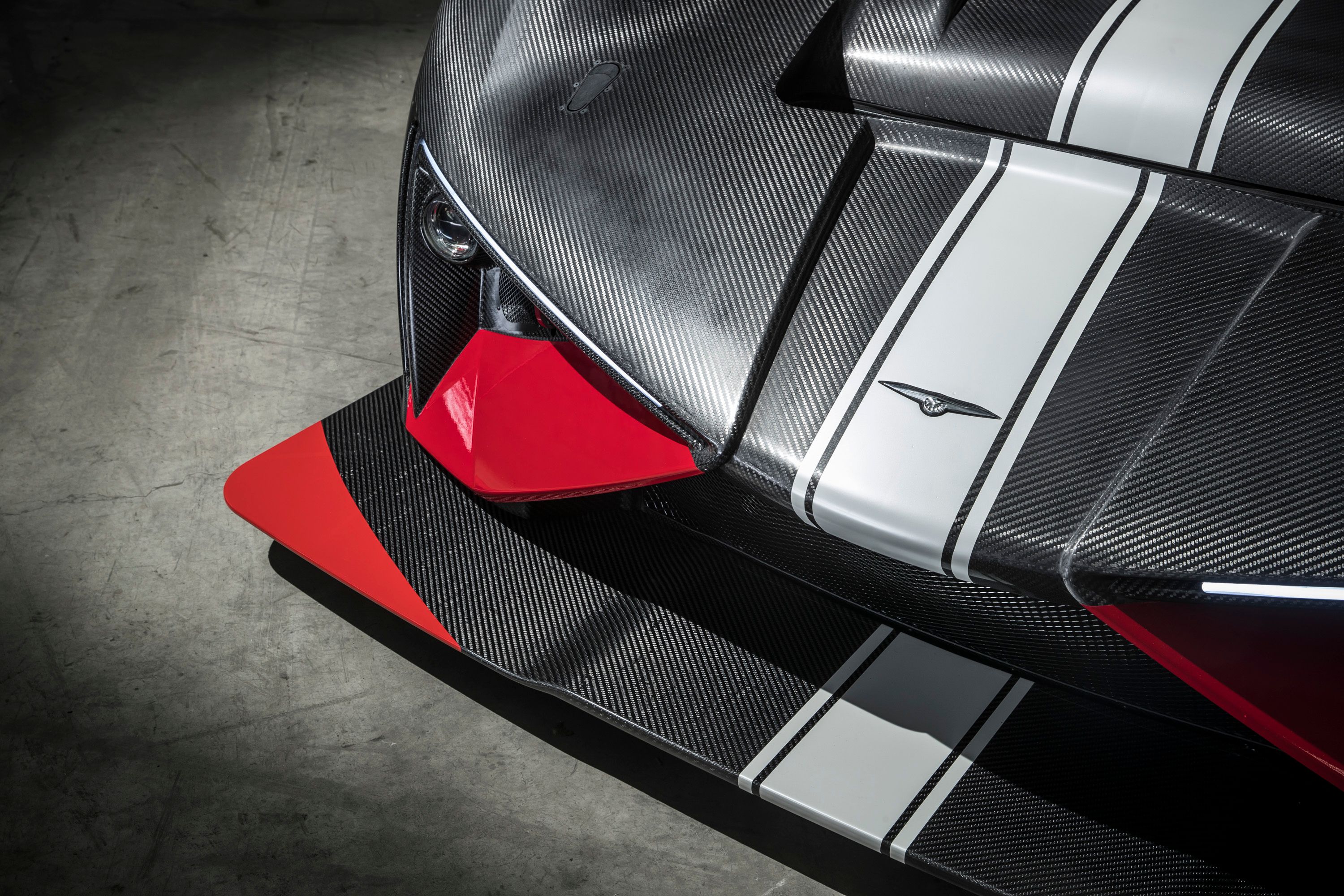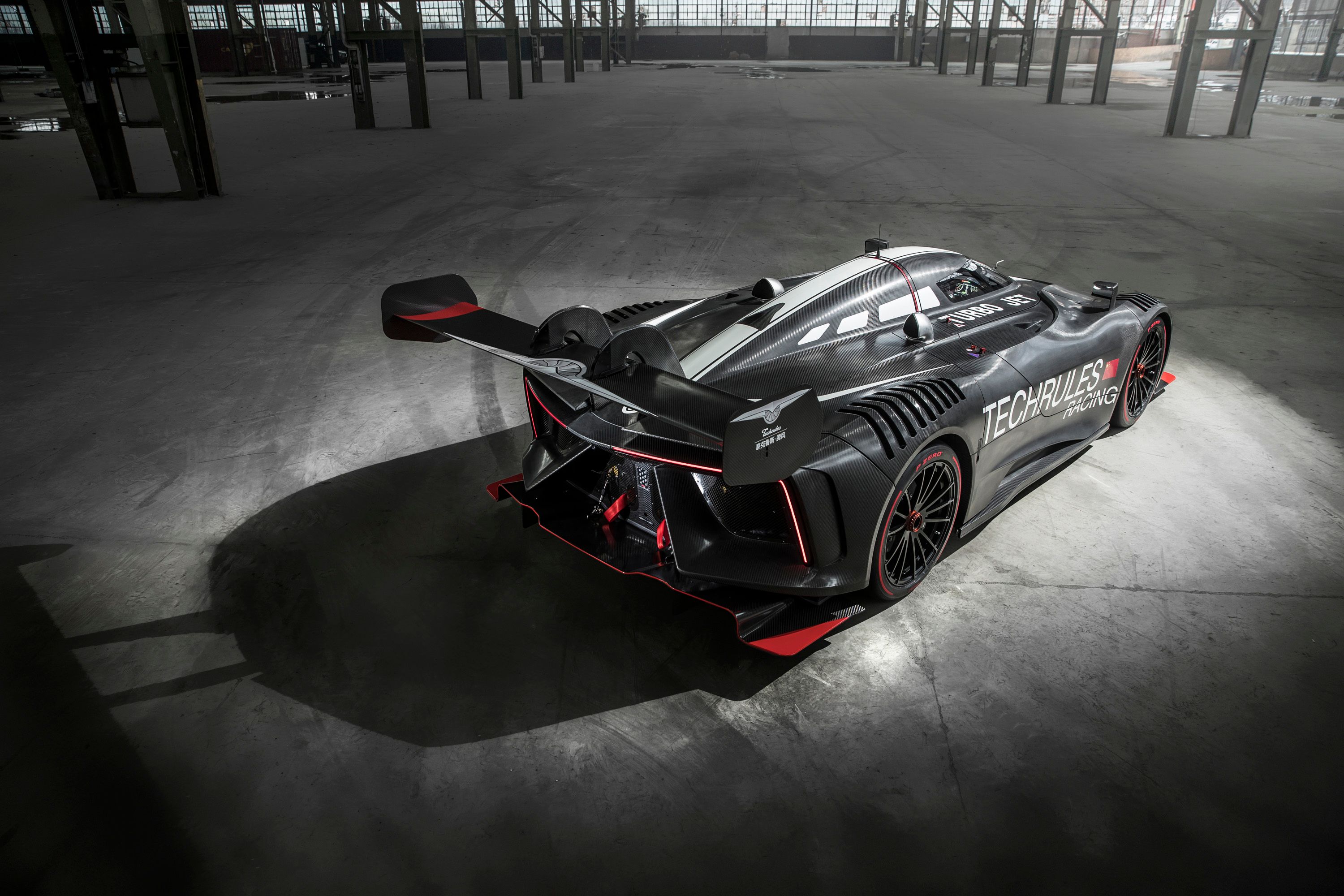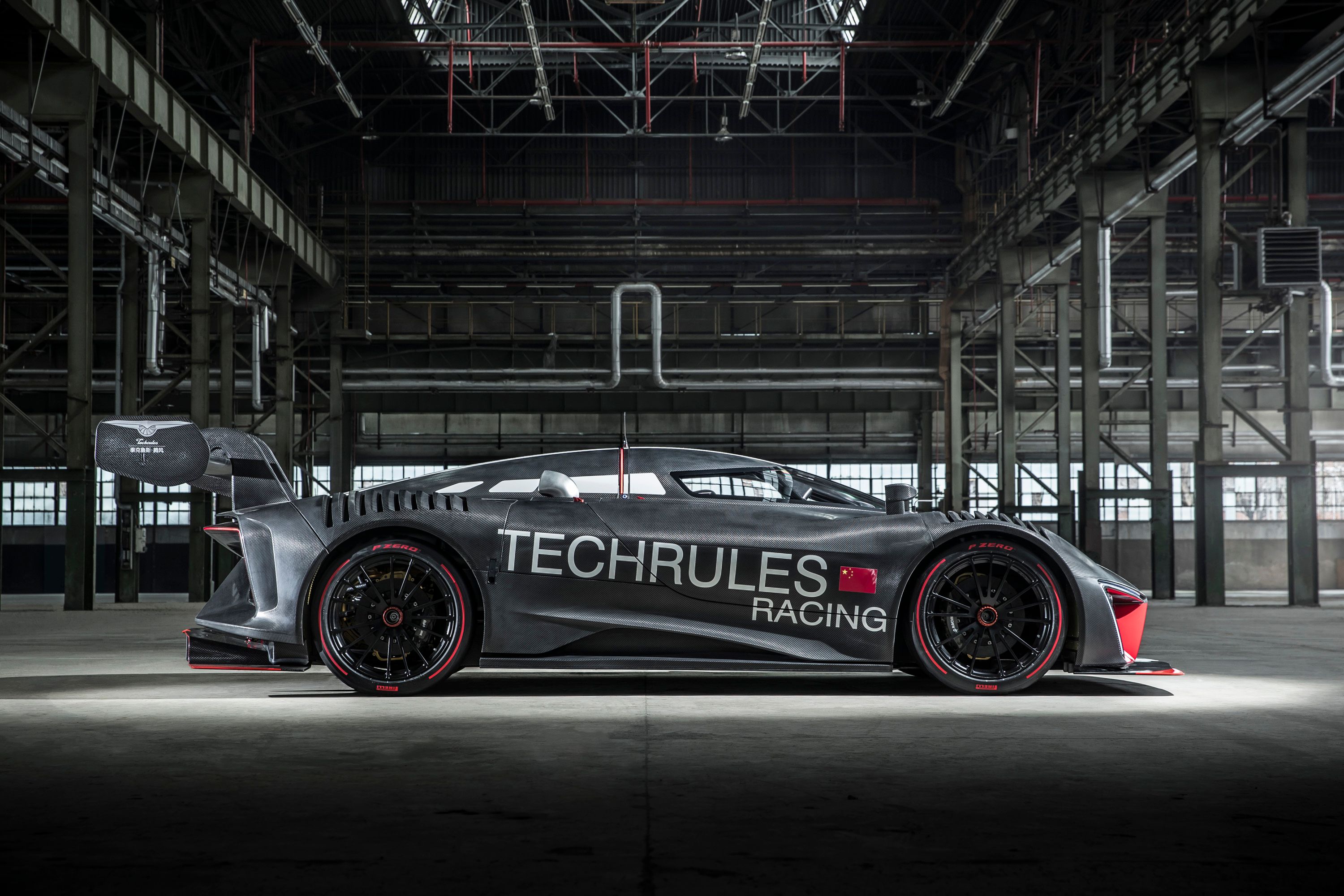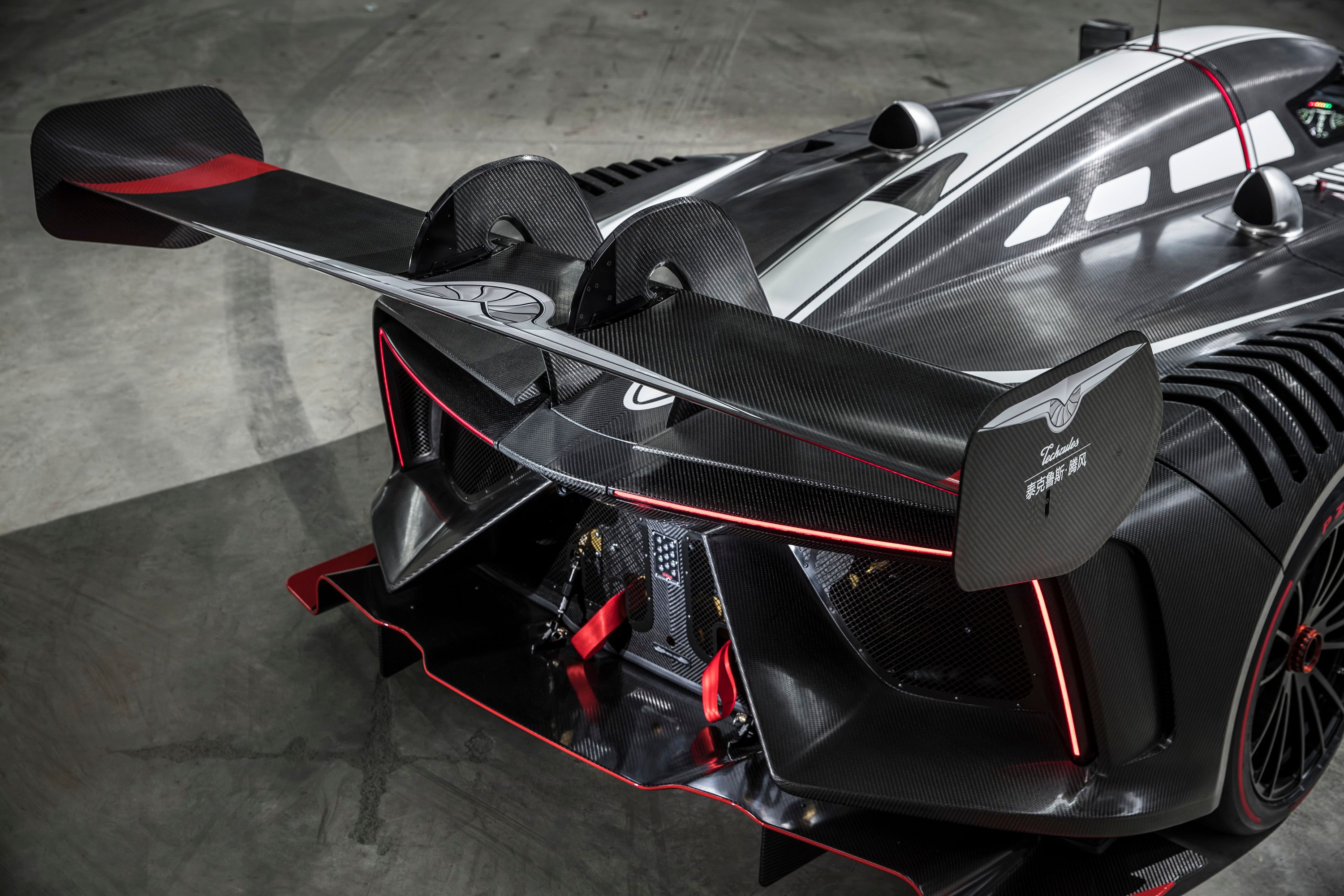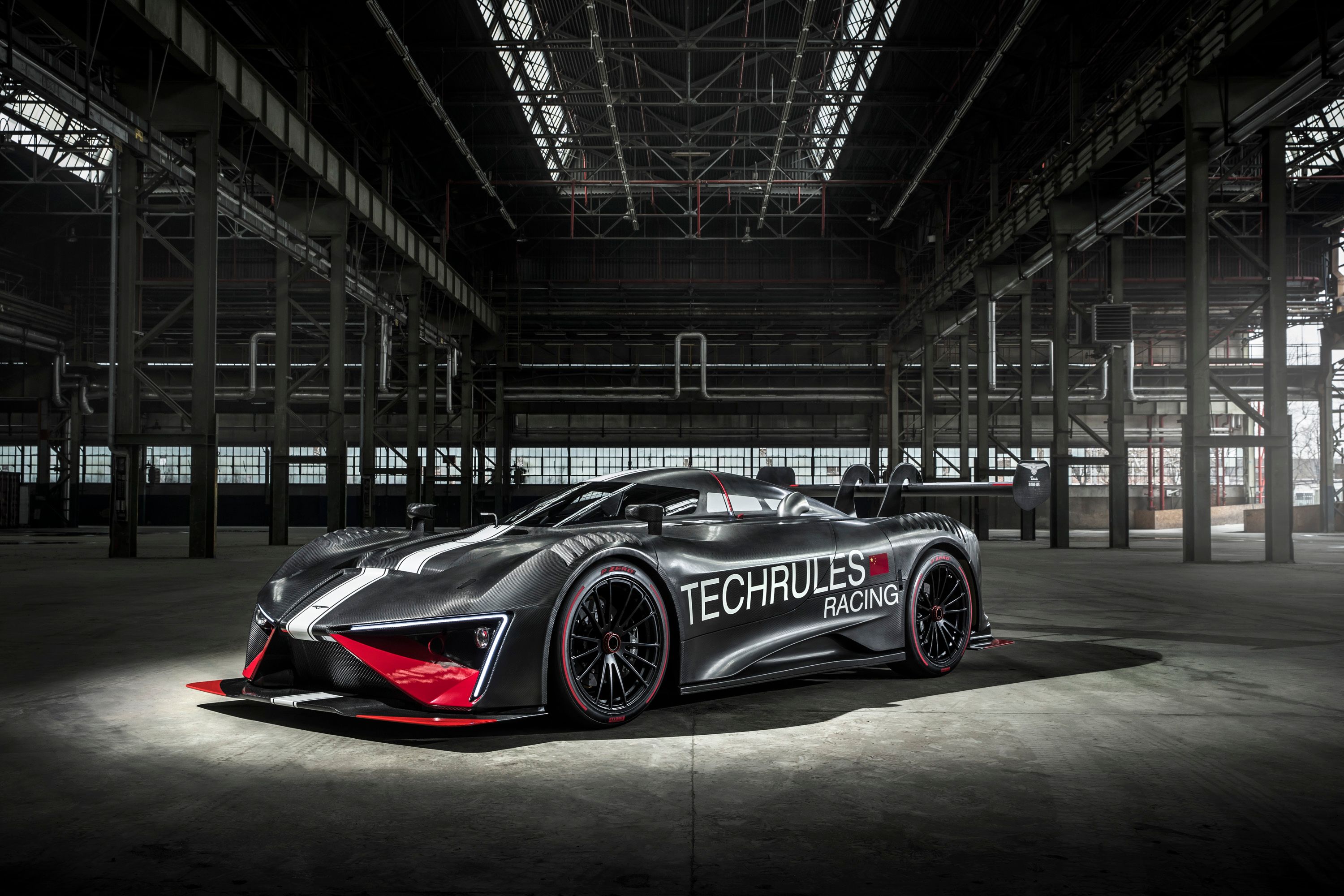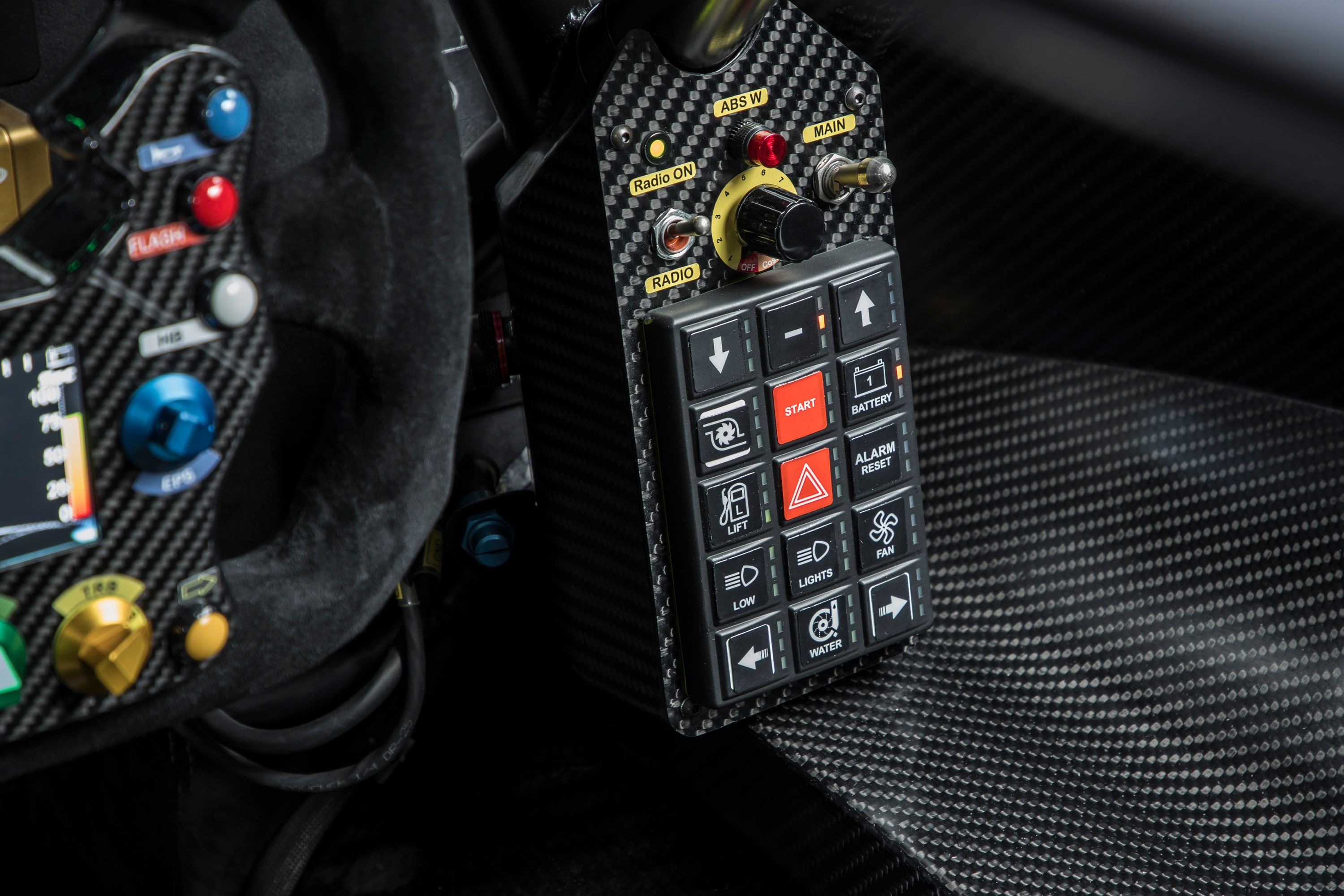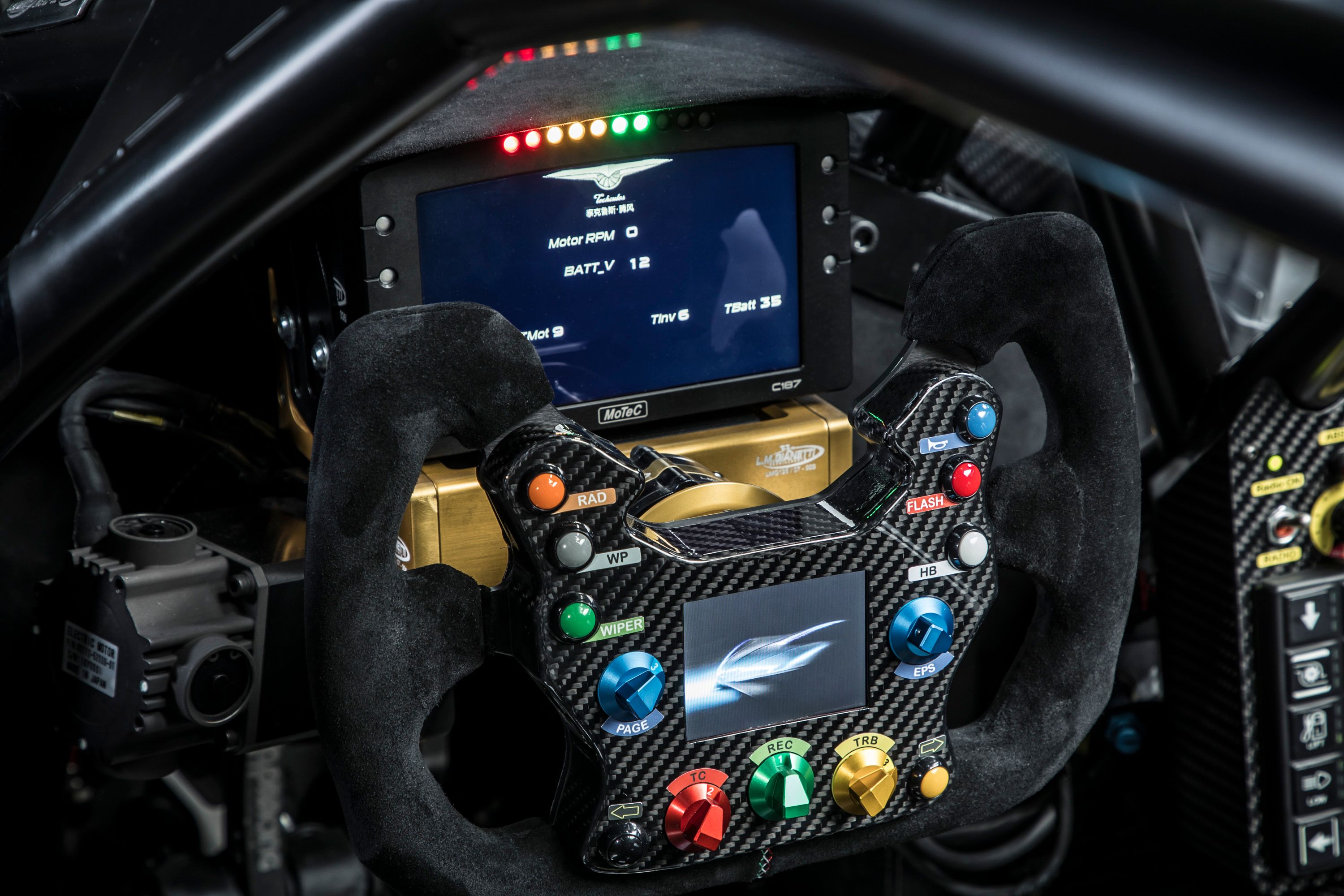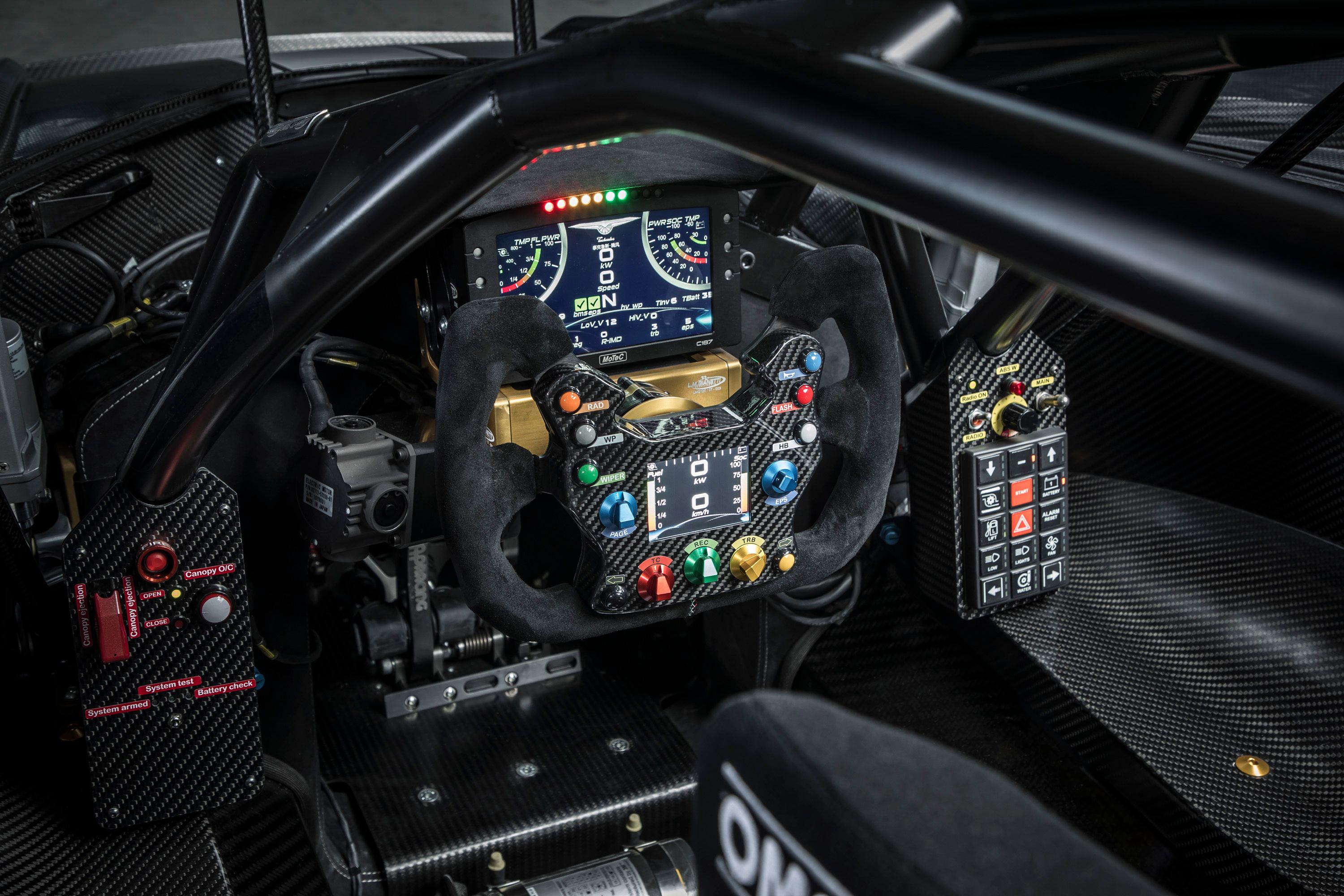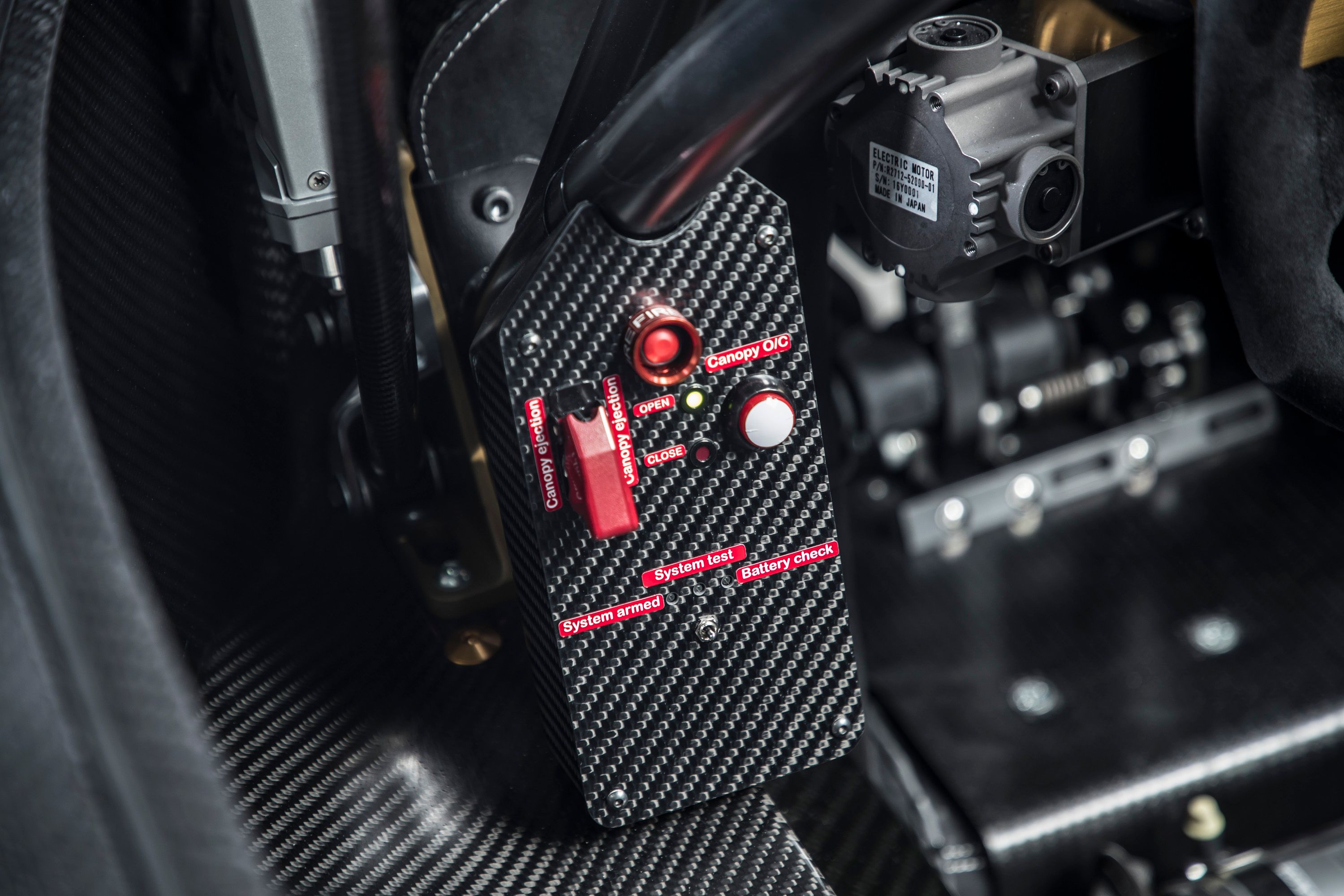Techrules is a somewhat fresh face in the supercar segment, but it’s quickly making a name for itself thanks to the cutting-edge innovations and top-shelf speed of its first model, the Ren. Based out of China, we’ve seen a slew of concepts out of the company in the past, including the AT96 and GT96 TREVs. Those last four-letters stand for “turbine-recharging electric vehicle,” which is Techrule’s innovative hybrid powertrain technology, and while it’s weird and sci-fi at first glance, we’ve now got it in a production-ready, lightweight, hyper-aggressive, track-only racing form with the Ren RS, following a debut at the 2018 Geneva International Motor Show.
Continue reading to learn more about the 2018 Techrules Ren RS.
2018 Techrules Ren RS
- Make: Array
- Model: 2018 Techrules Ren RS
- Horsepower: 1287
- Torque: 1725
- [do not use] Vehicle Model: Array
2018 Techrules Ren RS Exterior
As far as exterior styling is concerned, the Techrules Ren RS gets a very aggressive and racey aesthetic. The design was developed by Fabrizio and Giorgetto Giugiaro, and was inspired by aerospace (clearly).
Compared to the standard Techrules Ren, the RS version is a bit different, with upgrades added to improve the downforce and cooling capabilities. L.M Gianetti of Turin was also tapped to develop the exterior even further for racing purposes following extensive aerodynamic analysis.
Techrules says the Ren RS uses a “form follows function” philosophy for the design, which makes sense given the previously mentioned the aerospace influences. Indeed, the center of the machine gets an almost fighter jet-like cockpit, with the canopy rising upwards directly from the center of the car for ingress and egress purposes.
In front, the RS gets larger air intakes, which helps enhance the cooling air flowing to the radiators. Techrules also decreased the wheel well gap as much as possible to make the front profile more sleek and aerodynamic. When viewed from the side, we find the lower aero indents topped by turbine air intakes and exhaust pipes.
Moving over to the rear of the machine, we find a square tail with more of the same triangular design elements from the nose. The RS also gets a large single-foil rear wing with a swan neck design, which is configurable to the driver’s chosen specs for variable downforce levels. The wing was once again developed by Gianetti for racing purposes. All told, the car offers an aerodynamic efficiency of 3.36 with loads of downforce, plus a coefficient of drag rated at 0.43.
Finally, don’t forget the “Turbo Jet” bades, which give a nod to what lies in waiting under the long skinny pedal in the cockpit.
2018 Techrules Ren RS Interior
Stepping into the cabin of the 2018 Techrules Ren RS, we find a single-seat layout, which is a break from the original Ren concept. The non-RS Ren used an odd three-seater design with three separate cockpit bubbles, but as previously mentioned, the RS was simplified for racing purposes.
To that end, the RS comes equipped with a steel roll cage to keep it safe. Techrules says it went with a traditional roll cage over an enclosed carbon monocoque in order “to allow the upper structure to be specified for different race series if required.”
Further race-ready modifications were installed to help it pass tech, such as an 80-liter (21-gallon) FIA-certified “safety fuel bladder” mounted centrally and under the floor. The carbon fiber racing seats were made by OMP and carry an FIA approval, and there’s a fire extinguisher system and six-point harness as well.
The RS also gets a pretty cool Safety Canopy Ejection system, much like you might find on a fighter jet. The system uses six electric actuators to lift the cockpit bubble up and out in the event of an impact, allowing easier access to the cabin. The system can also be manually activated by the driver or race marshals if required.
Finally, an Air Jack system is used for quick pit stops, utilizing two jacks in front and two jacks in the rear.
2018 Techrules Ren RS Drivetrain
Without a doubt, the most interesting facet of the 2018 Techrules Ren RS has to be its novel Turbine-Recharging Electric Vehicle system, which manages to combine very high levels of power with a surprising level of efficiency as well. We first got a glimpse at Techrules’ TREV technology at the 2016 Geneva Motor Show with the GT96 and AT96 concepts, and now it’s looking like the tech is ready for prime time. Techrules even mentions that TREV technology could see applications beyond the automotive sector, such as in rail and busses.
“The series hybrid powertrain technology combines extensive experience of aerospace and electric vehicle technologies with several proprietary technical innovations to deliver unprecedented levels of efficiency and performance, with an ultra-low environmental impact,” the company says.
Essentially, the powertrain uses diesel turbines as range extenders, while the electric motors and battery pack make the machine actually move. There’s no direct electrical connection between the turbine and electric motors, and the turbines only kick in after the battery is all out of electricity.
This is how it works. After the system first takes in the air, it’s sent through a heat exchanger before it then heads to the cold air intake. Afterwards, the air is compressed and fuel is added before the mix is finally ignited. This obviously creates energy, just like it would in a jet engine. That energy is then used to spin turbine vanes before the exhaust gas is sent out into the atmosphere. Before it goes, the spent gasses are run through the heat exchanger to extract any leftover, unused energy for even greater efficiency.
The Techrules Ren RS offers multiple drivetrain configurations to choose from, including either four or six liquid-cooled electric motors for motivation. The four-motor set-up uses one motor per wheel, while the range-topping six-motor set-up uses one motor per front wheel and two motors for each of the rear wheels.
Buyers can get theirs with either a single 30-kW turbine or two 80-kW turbines. The 28.4-kWh battery pack is mounted in twin lateral pods and comes with an integrated battery management system.
The four-motor set-up produces as much as 858 horsepower and 1,150 pound-feet of torque, while the six-motor set-up offers up a head-turning 1,287 hp and 1,725 lb-ft of torque.
Put your foot down, and the 2018 Techrules Ren RS will go from 0 to 62 mph in 3 seconds, topping out at a maximum of 330 kph (205 mph). Range is rated at 1,170 km (727 miles) thanks to 80 liters of onboard diesel juice.
Finally, thermal management includes three water cooling circuits are for the motors, battery, and inverter.
2018 Techrules Ren RS Handling And Chassis
Unsurprisingly, the 2018 Techrules Ren RS uses a full carbon fiber tub for the chassis, and while the majority of it is composed of composites, there are aluminum and steel components used as well. In addition, the chassis is modular to accommodate the multiple powertrain configurations. Taking credit for prepping the chassis to withstand the rigors of track driving is L.M Gianetti of Turin, which added additional strength-enhancing components for greater torsional rigidity.
L.M. Gianetti also helped to develop the suspension tuning. Underpinnings consist of unequal length wishbones both front and rear, with high-strength tubular steel and tig welding.
“The wishbones are designed to withstand the level of forces that would be experienced by GT3 racing car,” says Techrules.
There’s also custom horizontally mounted in-board three-way adjustable coilovers from KW front and rear, which connect to the chassis via a pushrod set-up. Anti-roll bars are used in conjunction with custom end plates, while the front bar uses a new geared system that makes it more compact.
Materials used include machined aluminum for the motor reduction gearing housings and suspension pick-up points. There’s also all-aluminum fittings machined from billet 7075 T6 alloy.
Helping it stop are lightweight carbon ceramic discs measuring in at 380 mm (15-inch) in diameter and squeezed by six-piston calipers. Compared to traditional cast-iron brake discs, these carbon units shave off 30 kg (66 pounds) of unsprung weight and are also better suited to the rigors of racing duties.
All told, the suspension set-up is typical of a high-performance racing application, which is a little surprising considering the innovative powertrain. Perhaps Techrules is waiting to introduce the really impressive adaptable components on the street-bound Ren at a later date.
Regardless, the Ren RS still has a few tricks up its sleeves worth mentioning. For example, the traction control and torque vectoring systems are top notch, with as many as 30 individual sensors in place to monitor available grip and inputs. “This dedicated ECU assesses a variety of safety-related data - including speed, acceleration, steering angle, and braking force - to determine what assistance is required to optimize the car’s performance,” Techrules explains.
All this data means the system comes with two settings for the digital assists. Drivers can go with either Race for maximum attack, or Standard for better fuel efficiency.
Which begs the question - why would anyone want better fuel efficiency in a race car? Techrules didn’t elaborate, but we think endurance events would be a pretty solid use for it.
2018 Techrules Ren RS Price
The Techrules Ren RS is headed to “an exclusive band of customers” over the course of the next few years. The company is also gearing up to release further vehicles across world markets in the same time period, while simultaneously branching out into other industries to see where its turbine electric powertrain technology will be put to good use.
“We are working hard to grow our global capabilities in engineering and manufacturing and will soon reveal major joint ventures that will enable us to further develop our innovative technology for a wide range of commercial mobility and industrial applications,” says Techrules founder and CEO William Jin.
As for an MSRP on the 2018 Techrules Ren RS, no official pricing info is available as of this writing, but it’s expected to fetch upwards of seven figures.
2018 Techrules Ren RS Competition
Pininfarina H2 Speed
Believe it or not, but there’s another top-shelf racer out there with a wild high-tech powertrain and crazy levels of speed potential. This time around, we’re talking about the Pininfarina H2 Speed, which also just so happened to have enjoyed a debut at the 2018 Geneva International Motor Show. It certainly looks like something plucked off the Le Mans starting grid, and it goes like one too, sprinting to 62 mph in just 3.4 seconds. It’ll also max out at 186 mph, all while sticking hard in the corners thanks to advanced aero. However, the big headline with this thing is the hydrogen fuel cell power plant, which produces upwards of 653 horsepower through four electric motors.
Read our full review on the 2018 Pininfarina H2 Speed.
Conclusion
These days, it ain’t hard to find a supercar with spaceship good looks, insane performance, and high-tech goodies throughout. However, the Techrules Ren RS stands apart from the rest. Sure, it’s got all of those same characteristics, but the way it goes about making its speed is absolutely unique. After all, how many diesel-fueled turbine-powered electric vehicles have you heard of?
And we like that. The idea that you can make loads of speed without burning excess fuel is certainly a combo that’s likely to become more and more desirable over time.
All we really want now is a peek at what Techrules and the Ren might bring in terms of street-worthiness. So far, so good.
References
Radical Techrules Ren RS Storms into Geneva with Almost 1,300 HP
Read our full review on the 2018 Techrules Ren.
Read more Geneva Motor Show news.

